
Introduction
We’ve enjoyed exploring the rich, rich vein of English bird names that also sound like insults in two volumes (kindly click here and here), and believe us when we say it has not yet been exhausted. However, we also believe in accentuating the positive, so here are twelve bird names with more laudatory connotations.
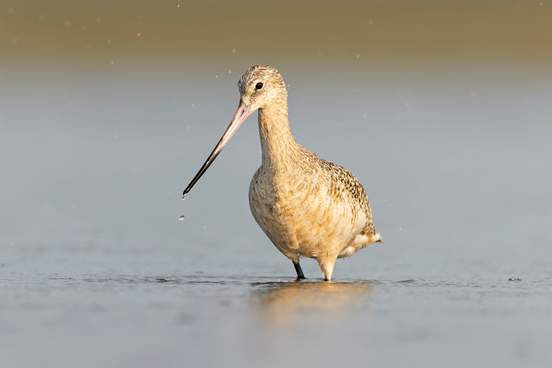
Godwit
Definition: any of a genus (Limosa) of shorebirds that are related to the curlews and sandpipers and have a long slender slightly upturned or straight bill
Godwit isn’t necessarily a combination of the words god and wit; etymologists aren’t sure where it comes from. It’s probably more likely that the word is imitative of a sound made by one or more species of the shorebird. Don’t let that stop you from ascribing it with fondness to your favorite Poindexter, however.
Even directionally challenged humans needn’t get lost any more, thanks to the advent of low-cost GPS devices in cell phones and automobiles. But nonhumans that navigate from place to place have to find their way around planet Earth without such tools. Take the bar-tailed godwit, a migratory champion. Each year, as cold weather approaches, flocks of these large wading birds take off from summer breeding grounds in Alaska and fly south, crossing thousands of miles of trackless ocean to nesting grounds in New Zealand.
— Laurence A. Marschall, Natural History, July/August 2012
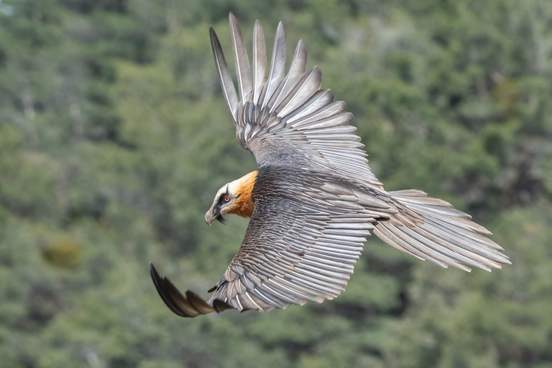
Bonebreaker
Definition: any of several large birds (such as the giant petrel, the lammergeier, or the osprey)
Along the same lines as bruiser, bonebreaker could make a good compliment for someone, an athlete perhaps, who appears impressively formidable. The birds who have been dubbed bonebreaker over the centuries are certainly impressive. The lammergeier in particular has so fascinated English speakers for its food foraging strategy that it has also earned the moniker ossifrage, which traces back to the Latin words for “bone” and “break.”
Nicknamed the “bone-breaker,” the Lammergeier feeds on the carcasses of goats and sheep, and sometimes smashes bones open by dropping them from a great height to get at the marrow.
— Robin Gauldie, Top 10 Crete (2011)
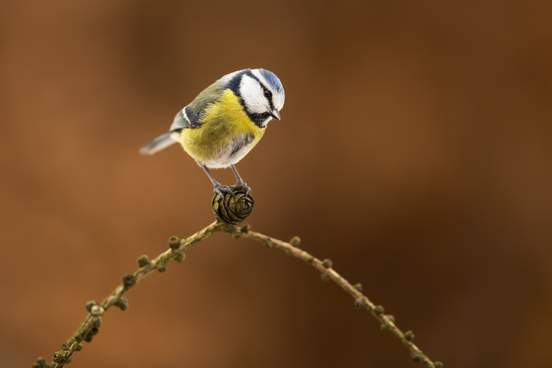
Tydie
Definition: a small bird variously identified as a wren or the blue titmouse
It’s not clear what bird English poet Michael Drayton was referring to when he wrote in his poem “Poly-Olbion” of a delicately singing “Tydie.” It may have been what is today known as the Eurasian wren, but could also have been the Eurasian blue tit (the similar word tidife or tydif is also thought to refer to the latter). Although its first syllable likely rhymes with bid as opposed to bide, we recommend employing the long i if you use it to refer to a compatriot who is neat and meticulous, as it seems one should be able to.
And of these chanting fowls, the Goldfinch not behind,
That hath so many sorts descending from her kind.
The Tydie for her notes as delicate as they,
The laughing Hecco, then the counterfeiting Jay…
— Michael Drayton, “Poly-Olbion” (1622)
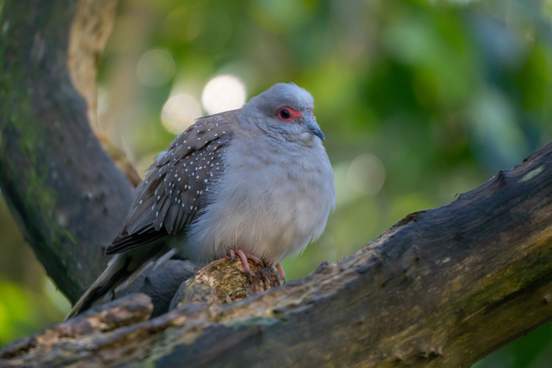
Diamond dove
Definition: a small Australian dove often kept as a cage or aviary bird that is largely gray and brown with the wings dotted with white
Not to be confused with “Diamond Dave,” diamond dove is a lovely sobriquet for a small Australian dove and a potential term of endearment for your bae.
Abra and Cadabra are a bonded male and female pair of diamond doves available for adoption at Yellowstone Valley Animal Shelter. The ground-dwelling birds are relatively quiet.
— KPVI.com (Pocatello, Idaho), 24 June 2018
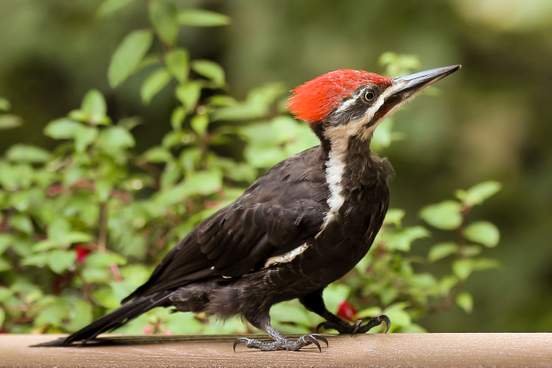
Good God
Definition: a large red-crested North American woodpecker that is black with white on the face, neck, and undersides of the wings
Was the pileated woodpecker James Brown’s favorite bird? It’s certainly possible—Georgia, where the legendary singer grew up, is entirely within the woodpecker’s range. But whether or not the bird’s lesser-known nickname good God inspired Brown’s famous musical exclamation, we wouldn’t be surprised if he—or anyone—said as much upon seeing the striking pileated coursing through the woods. Not to be outdone, the (sadly extinct) ivory-billed woodpecker earned the nickname lord god bird.
Some of the common names for the pileated woodpecker are very interesting—great black woodpecker, Longcock, Cock-o-the woods, Woodcock, good-god woodpecker and—the one that fits the bird the best (in our opinion)—is “carpenter bird.”
— The News-Sun (Sebring, Florida), 11 May 2014
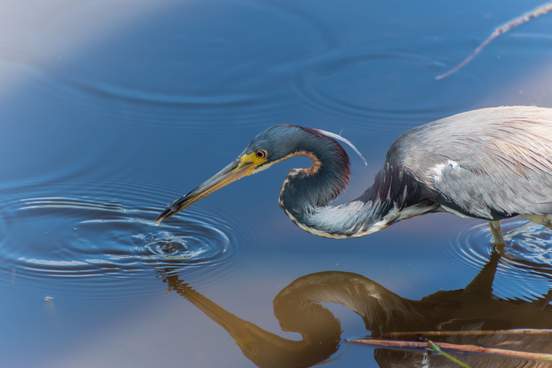
Demoiselle
Definition: an American heron that is slaty above and white beneath
Demoiselle is a word borrowed from French in the early 16th century meaning “a young lady” (the English word damsel is a relation). It’s a pretty word that has been used over the centuries to refer to various animals that have also been deemed pretty, from the damselfish to the damselfly to what is now more commonly known as the tricolored heron (formerly the Louisiana heron).
He writes movingly about “the fanatically devout birding community” and their search for the demoiselle, somewhat akin in appearance to a great blue heron.
— Mickey Pearlman, The Boston Globe, 12 Jan. 2003
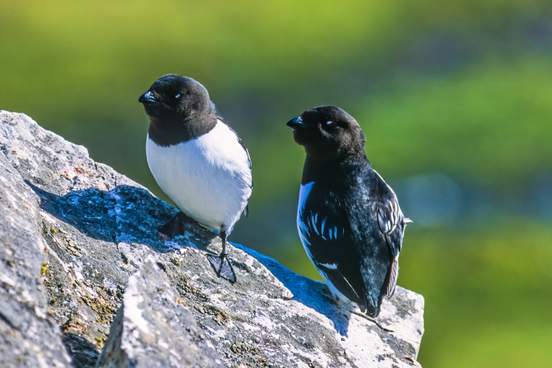
Dovekie
Definition: a small short-billed auk breeding on arctic coasts and ranging south in winter
Dovekie comes from Scots, the English language of Scotland, where it originally referred to a species of guillemot, but now commonly is applied to the little auk of our definition as well. Dovekie combines two diminutive suffixes, -ock and -ie, with dove (possibly due to the dove-like bond between nesting pairs of guillemots). So it’s extra-cute and doubly worthy of your sweetie.
Dovekies are gregarious colony birds and the North American equivalent to penguins, with a tuxedoed look and Arctic lifestyle. … They are graceful while swimming in icy waters but clownish when moving on land.
— Danielle Belleny, This Is a Book for People Who Love Birds (2022)
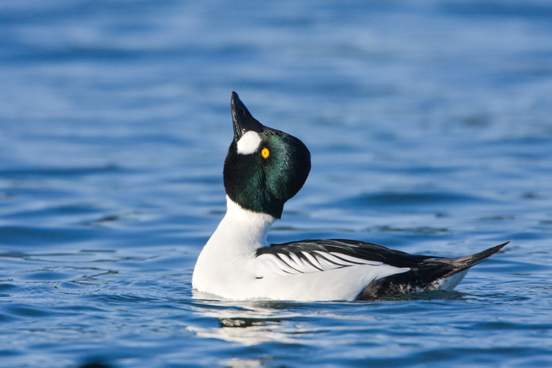
Merrywing
Definition: a large-headed swift-flying Holarctic diving duck with the male having a green head and striking black-and-white markings
The goldeneye already has a cool name, but it has also been blessed with merrywing. The poor bufflehead, as we’ve recounted, has a name that basically means “blockhead” or “fool,” so we are pleased as punch to share that it has also historically been called merrywing, which should help its esteem. If your squad includes someone who is always cheerful, we think calling them “merrywing” would be just ducky.
Golden-eye are also called merry-wing, rattle-wing or jingler in English … because of the loud humming or whistling sound the narrowed web the last two primaries (ten outer quills in each wing) make as the drakes fly.
— Victoria de Rijke, Duck (2008)
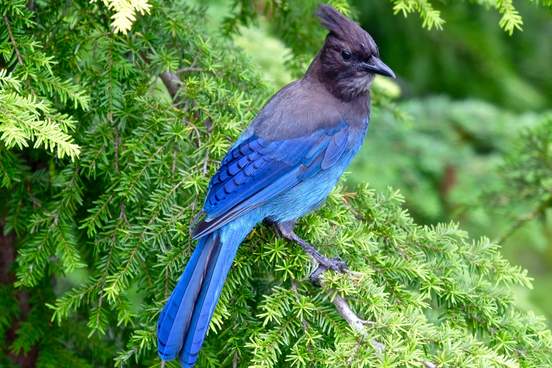
Stellar jay
Definition: a jay of western North America with a high crest and black and dark blue plumage
The usual name for the bird in question is Steller’s jay, after 18th century German naturalist Georg W. Steller. If you want to compliment someone by calling them Steller’s jay, be our guest/you do you/etc. However, enough people over the years have altered Steller’s jay to stellar jay that the latter is entered in our unabridged dictionary, and makes a lot more sense as an honorific, especially if you happen to know someone named Jay (we think most people do?).
The stellar jays go wild over sunflower seeds. A few jumbo sunflowers planted against a fence are real scene-stealers when in bloom. Roast and salt some of the seeds for yourself, and save the rest for the jays.
— Sue LeMontre, The San Diego Union-Tribune, 25 Mar. 1984
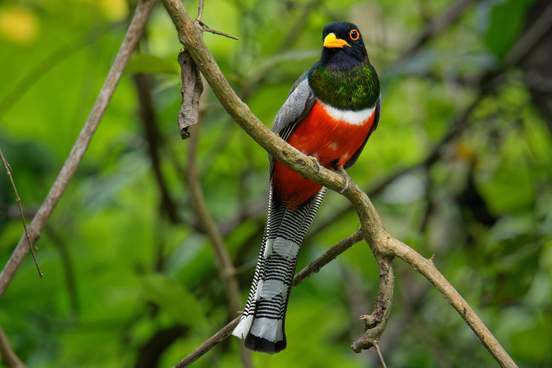
Elegant trogon
Definition: a colorful, long-tailed, yellow-billed, tropical bird of Mexico and Central America with a red belly and white band across the breast and with the back, chest, and head bright green in the male and brown in the female
Trogon comes ultimately from the Greek verb trōgein, meaning “to gnaw.” At this time, there are 35 species of trogons that, along with quetzals, make up the taxonomic family Trogonidae. Trogons occur from the extreme southwestern United States all the way to Argentina, throughout sub-Saharan Africa, and from India to Philippines. The English names of all of these birds consists of trogon modified by some descriptor, and elegant trogon, though not the most objective, is among the most complimentary. At least, should you call your bestie an elegant trogon whilst they are modeling their latest outfit, we hope they would not mind.
According to the Audubon Society, birdwatchers have sought out Southern Arizona for elegant trogon sightings since the 1890s.
— Jamie Verwys, The Green Valley (Arizona) News & Sun, 28 Dec. 2022
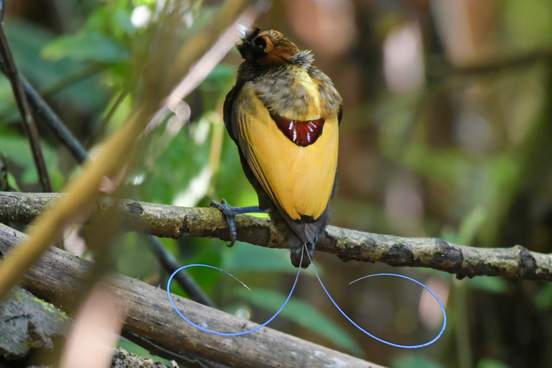
Magnificent bird of paradise
Definition: a showy bird of paradise of northern Australia and New Guinea with the male having a golden yellow nape, a blood red patch on the back, and shining blackish green on the breast
Bird of paradise has been used in English for almost 500 years to refer to any of numerous brilliantly colored plumed birds (family Paradisaeidae) chiefly of New Guinea and neighboring islands. Sure beats stinkbird! Not all bird-of-paradise species have especially flattering English names (we’re looking at you, sicklebill), but the magnificent bird of paradise sure does. And if you peep its picture (or search out a video clip of its fancy dance) you’ll understand why.
The Honolulu Zoo today announced the hatching of four magnificent bird-of-paradise chicks. … The magnificent bird-of-paradise, or Cicinnurus magnificus, is renowned for its elaborate mating dance. The females are bland brown, but males come in vibrant colors. When trying to court a female, the male will clear out an area of branches and fallen debris to perform his dance, which includes vocalizations.
— The Honolulu Star-Advertiser, 23 Dec. 2019
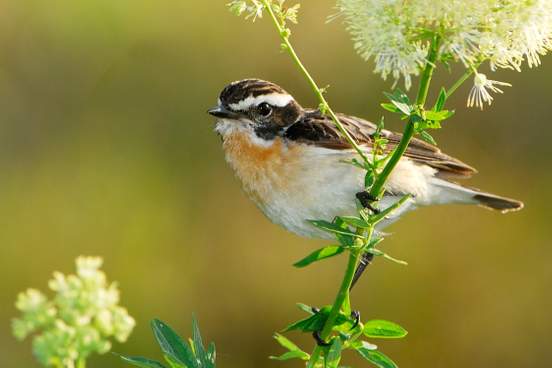
Whinchat
Definition: a small brown and buff European singing bird of grassy meadows
The English language is so loaded with words like blowhard and gasbag that we should have one teensy positive word for a polite interlocuter, as a treat. Whinchat would more than fit the bill (cough), no? Whin refers to the gorse plant, alas, and not to winning, but that can stay between us.
Given the right weather, by the end of February the first Sand Martins and Wheatears could be arriving here. In the second half of April, Whinchats will arrive, but for now they are in the savannah and forest mosaics of central Africa.
— Julian Hughes, The Daily Post (North Wales), 1 Feb. 2024






